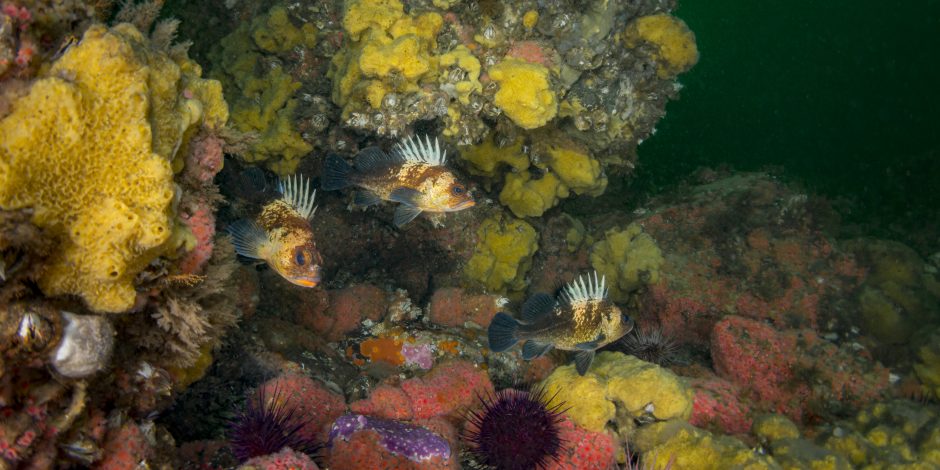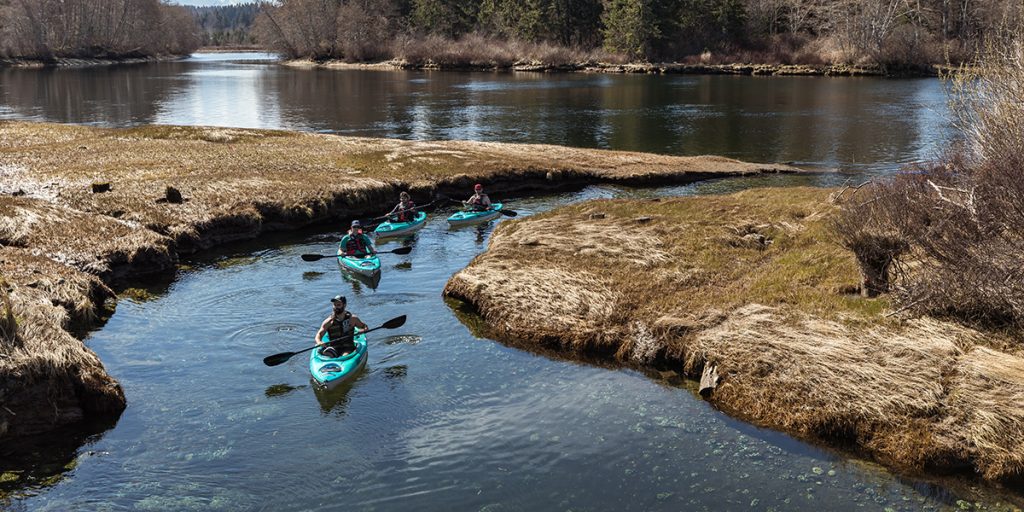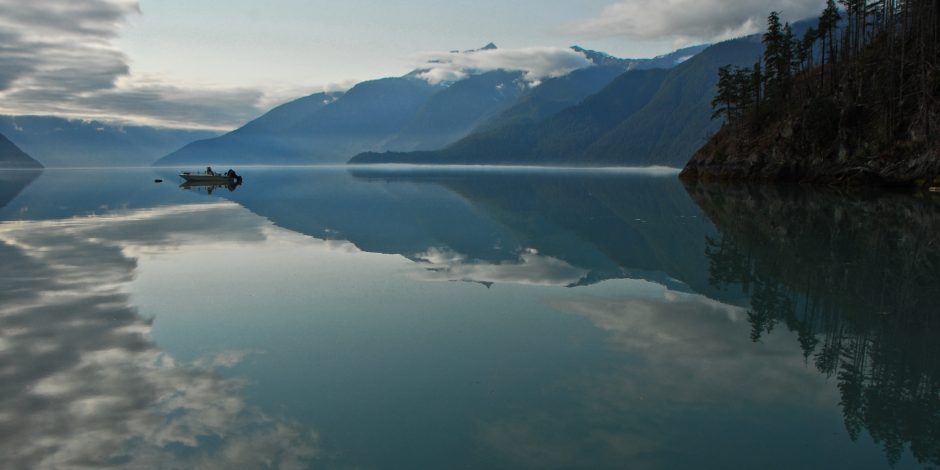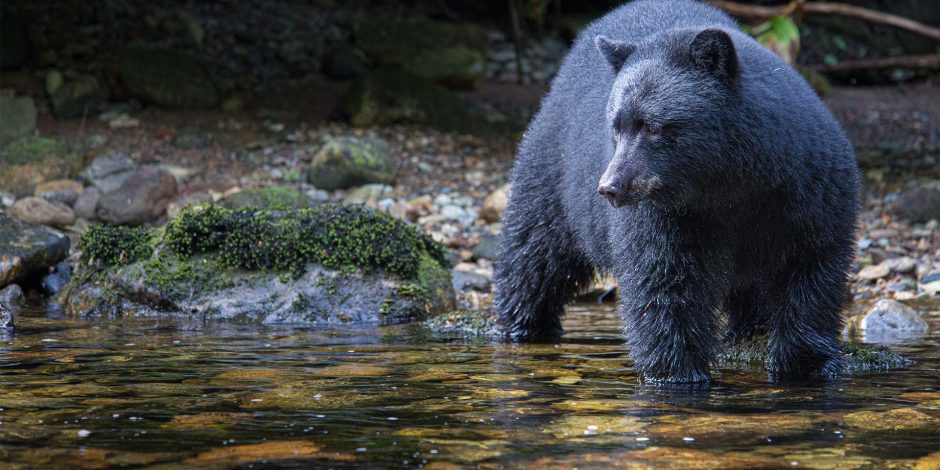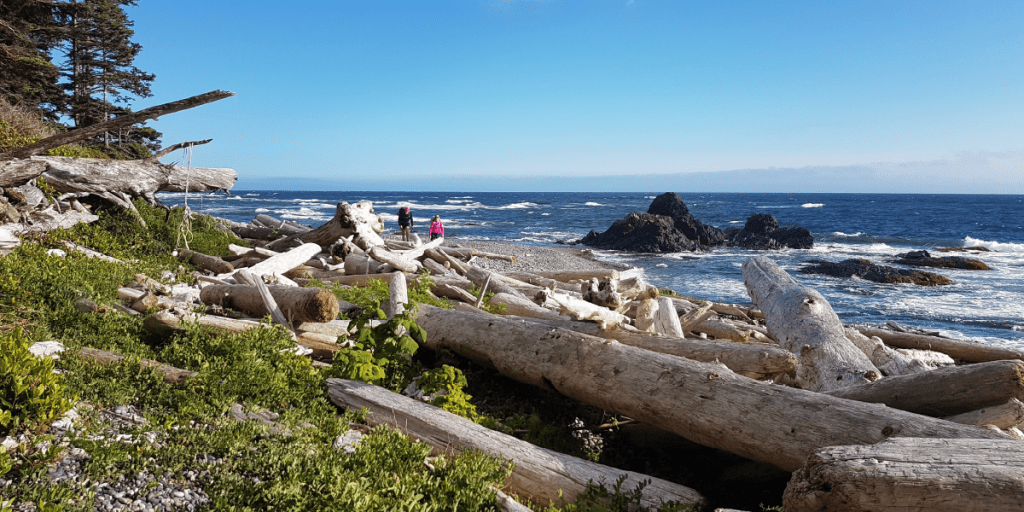Cruising over the turbulent waters of Discovery Passage is a familiar activity to many Campbell Riverites. The spectacular views of mountains, water, kelp forests, and wildlife provide a visual feast. Yet just beneath the keel of the boat there exists an entirely different world that many can barely imagine, let alone witness.
The dark, plankton-rich waters are home to some of the most dramatic and colourful sea life found on the planet. In the depths of Discovery Passage along the shores of Quadra Island there is a surprise for divers. Steep rock walls are festooned with a myriad of colourful life forms, and, as the current pushes you along, the scene changes constantly. Sponges, corals, and anemones with outstretched tentacles gather food as they sweep past on flood and ebb tides. Due to the plankton and algae-filled waters in the area, underwater visibility is not always the best compared to other places in the world. But it is this nutrient-dense water that makes this area harbour a dramatic, rich diversity of life that is surprisingly comparable to tropical seas. Some say the local diversity is even greater, and many divers are happy to accept the trade-off. The late autumn and winter months generally allow for the most visibility and are considered the best times for diving here.
Divers have called these waters the Emerald Sea.
The rich green background in photos from the area is iconic, and seen in few other parts of the world. The cold, nourishing British Columbia waters allow for invertebrate life to become massive in size. There are varieties of sea stars, jellyfish, octopus, anemone, and nudibranchs that are among the largest in the world. Along the steep walls of Quadra Island, in either direction of the ferry terminal, masses of yellow encrusting sponges, white finger sponges, and large clumps of cloud sponge feature in the display. Mixed in with all these are spectacular mats of strawberry anemones. These small pink and red anemones are actually coral polyps. In several places along the Passage there are also clusters of soft corals. These delicate pink corals lack the hard skeleton that we typically think of when imagining corals. The dense life that grows on the rocks is considered a reef, and along with the kelp forests, attracts a lot of fish life. Many species of rockfish inhabit these waters, as well as large marauding lingcod, cabezon, and many divers’ favourite fish, the wolf eel.
These wonderful fish usually stay in a den that they inhabit, sometimes for many years, so divers can find them on a regular basis, even leading to some of them being named. The face of a large male wolf eel has been likened to a Pumpkin Patch doll. They are gnarly looking, but also very cute. Sea urchins are their main food. Occasionally a diver may break one open and feed it to the wolf eel.
To many divers, though, the star of these waters is the giant Pacific octopus. They can be found in several places, including among the pilings of the Argonaut wharf. These intelligent and curious creatures will, at times, come out of their den and interact with divers, sometimes even trying to steal cameras or dive lights.
The diversity and richness of underwater life in BC is so rewarding to see that many divers are content to only dive these waters. It is an effort to learn and equip yourself with all the necessary gear to safely venture into the depths, but it is well worth it. Oceanfix.ca Dive Centre and Abyssal Diving Charters offer trips and learning opportunities for those wanting to experience diving in Campbell River. You will see a world that cannot be imagined by most people who remain on the surface.

